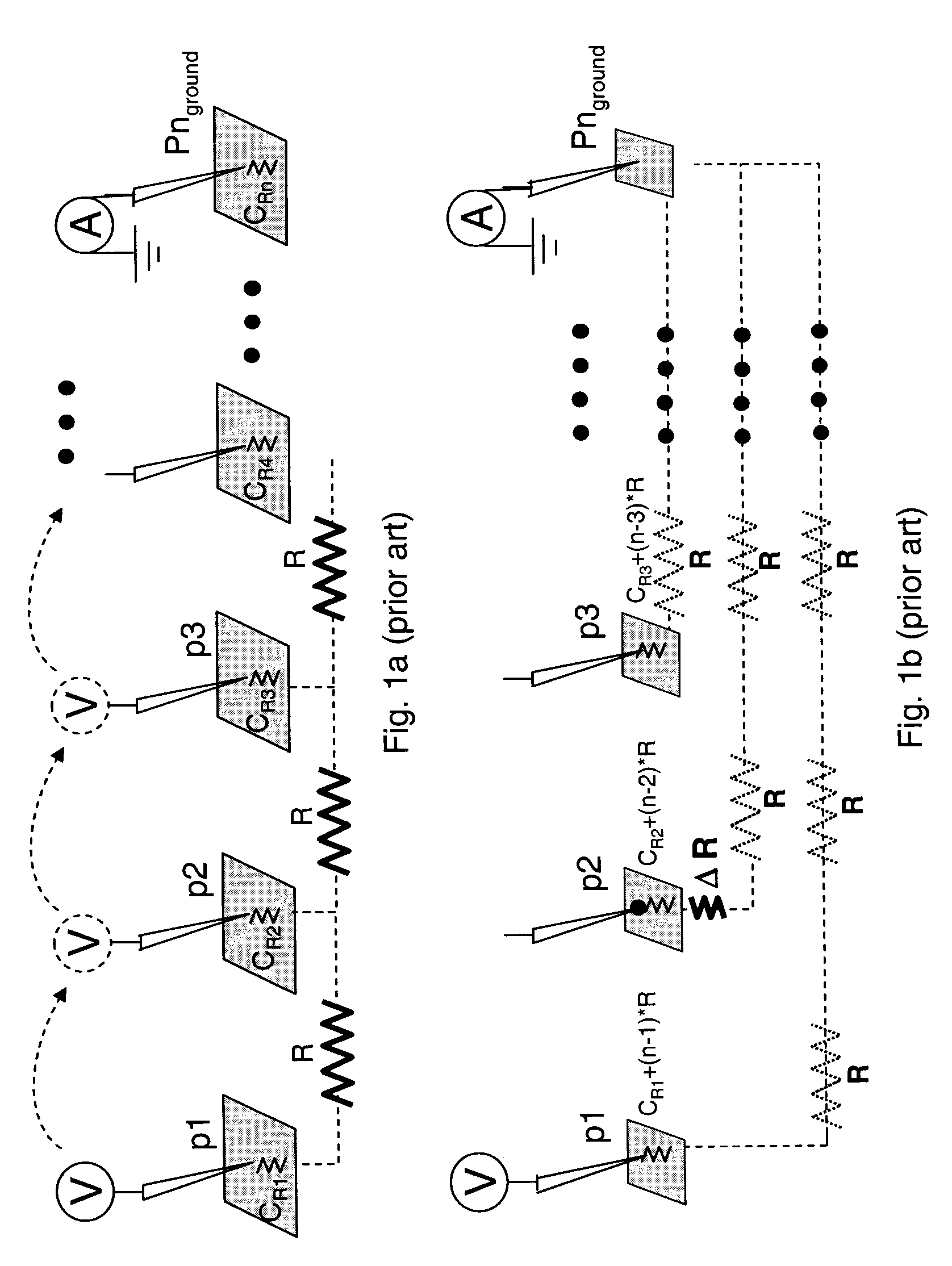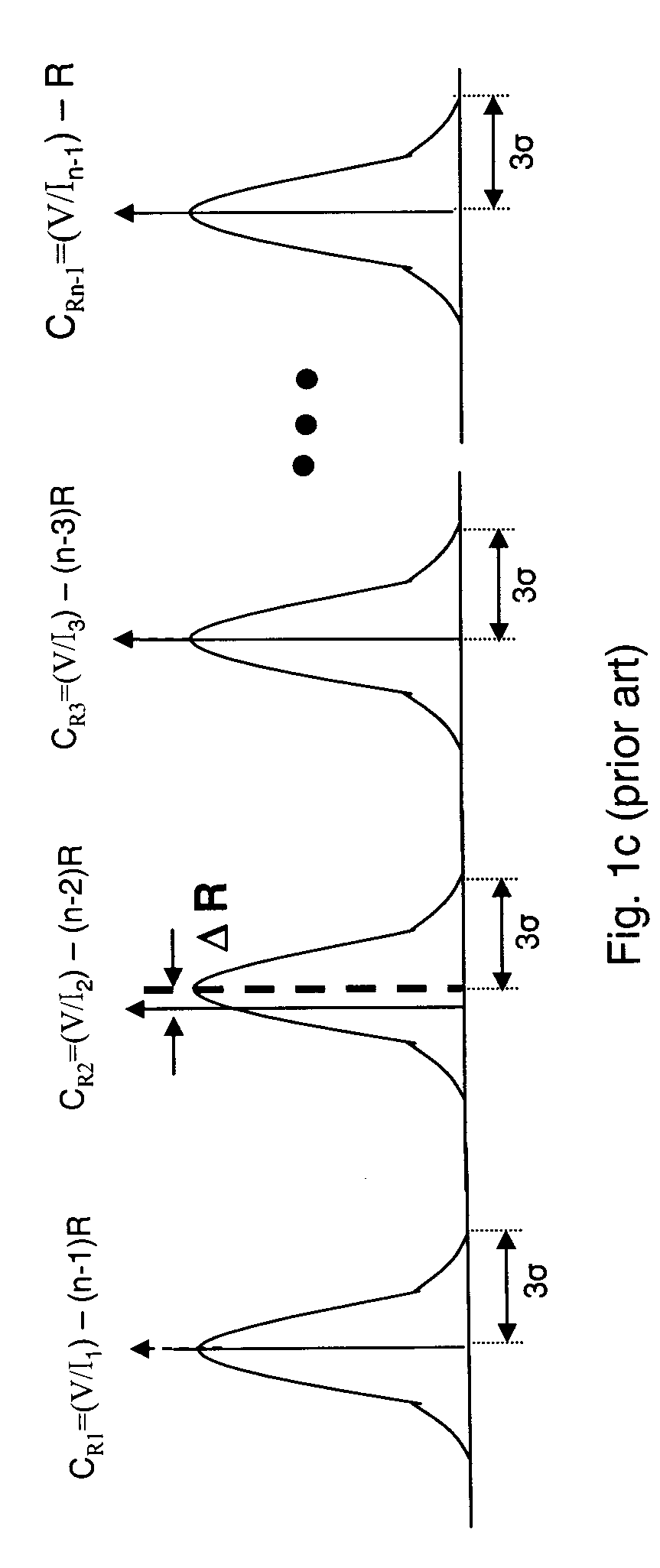Real time system for monitoring the commonality, sensitivity, and repeatability of test probes
- Summary
- Abstract
- Description
- Claims
- Application Information
AI Technical Summary
Benefits of technology
Problems solved by technology
Method used
Image
Examples
Embodiment Construction
[0044]Referring to FIG. 2, there is shown a schematic diagram of the present invention for measuring the sensitivity and linearity of the test probes, wherein two sets of the normalized current distribution for each probe are obtained from applying two sets of voltage, Va and Vb, to each probe. The shifts of two populations of each probe resulting from the second applied voltage can be categorized in three categories, according to the present invention.
[0045]The first case shows probing pin, displaying a “low variability” and significant difference between two current populations, I1a and I2b, obtained by applying voltages Va and Vb, respectively. In addition, the linear behavior of Ohm's Law (V=I*R) applies to the shift of the mean of the two populations, i.e., mean_I1a / mean_I1b=Va / Vb.
[0046]The second case shows probing pin2 that indicates a “low variability” but an insignificant difference between the two populations, I2a and I2b, due to the delta of the mean value which is insuff...
PUM
 Login to View More
Login to View More Abstract
Description
Claims
Application Information
 Login to View More
Login to View More - R&D
- Intellectual Property
- Life Sciences
- Materials
- Tech Scout
- Unparalleled Data Quality
- Higher Quality Content
- 60% Fewer Hallucinations
Browse by: Latest US Patents, China's latest patents, Technical Efficacy Thesaurus, Application Domain, Technology Topic, Popular Technical Reports.
© 2025 PatSnap. All rights reserved.Legal|Privacy policy|Modern Slavery Act Transparency Statement|Sitemap|About US| Contact US: help@patsnap.com



